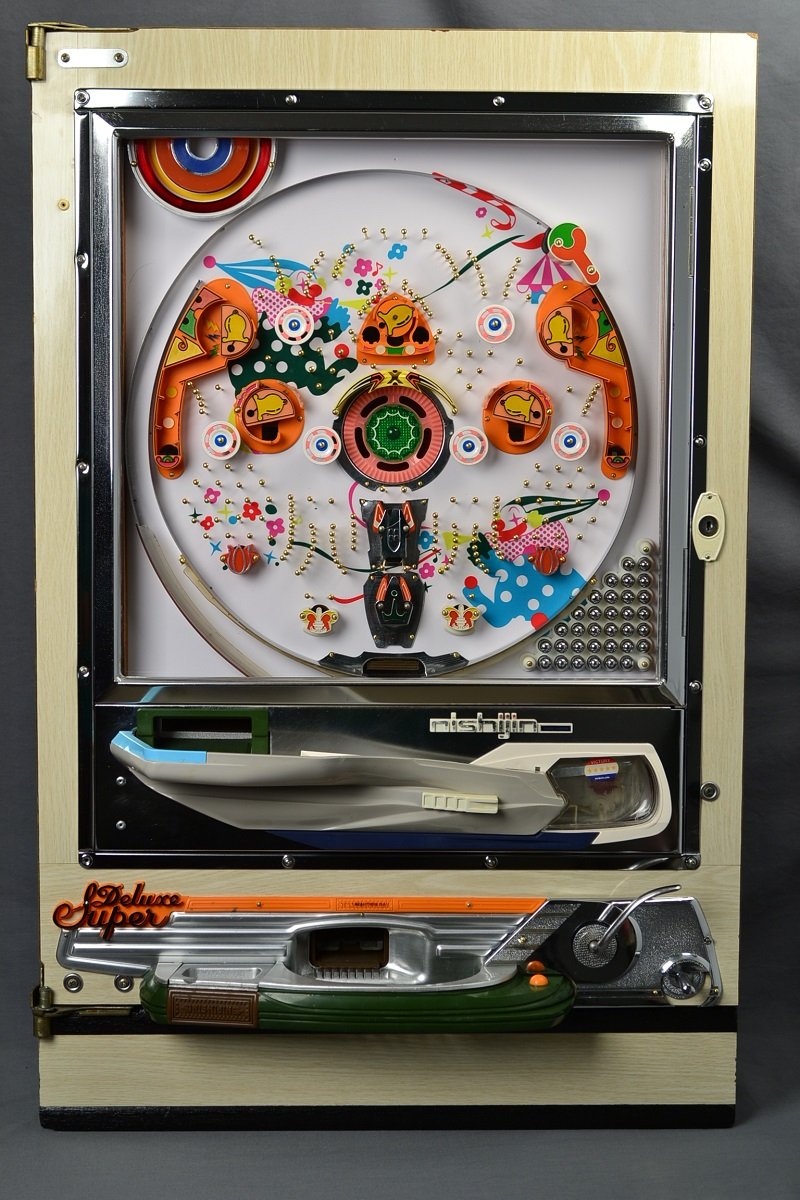
Pachinko Machine Values
How much is my pachinko machine worth?
How much is my pachinko machine worth?
This is by far the most popular question asked by people, and a fairly difficult one to answer. There are actually four major factors that determine the actual value of a particular machine. These are Rarity, Condition, Location, and Demand.
Rarity
Literally millions of pachinko machines were imported to the United States in the mid 1970's, and many were sold in retail outlets such as Sears, Kmart, and Woolworths. Believe it or not, the retail prices were usually in the $15.00 - $20.00 range. Several independent importers also brought in many units from abroad and sold them through both mail order and retail outlets. And of course, returning servicemen often brought them home as interesting souvenirs.
Pachinkos from the 1970's make up the vast majority of machines in the United States, in numbers easily approaching 95%. They come from a wide variety of manufacturers, with the bulk being Nishijin. Also plentiful are Sanyo, Sankyo, Daiichi, Ginza, and Heiwa to name a few. These machines will generally not have any premium attached to them since so many are available on the market. Certainly some collectors may have pay a small premium for specific manufactures they may prefer, but this is not a common occurrence, and not useful for determining a value.
Pachinkos from the 1960's are far more difficult to locate. They come in two basic forms, these being the single shot and the single shot conversions. Many older single shot machines were retrofitted with an outer plastic feeder tray to allow automatically feeding. The single shot conversions were only produced for a few years, and many collectors will place a premium on them. Although not nearly as plentiful as the 1970's machines, they still exist in fairly high quantities. The single shots are far more difficult to find, especially those made prior to 1962. Many collectors prize the early 1960's machines for the simplicity and elegant designs, and as such, they can command fairly high premiums.
There are very few pachinko machines in the United States older than 1960. Most models known today are unique, and it is likely that hundreds of models by many dozens of manufacturers from this period are unknown in the United States. These machines can command high premiums, and are highly sought by collectors.
The extremely rare machines are those that were created prior to 1952 and the introduction of the Masamura gauge. One would find themselves fortunate indeed to have possession of such a rare and historic pachinko machine.
Condition
As with any other collectable, condition matters. Rusted and pitted chrome, water-stained play fields, rotted frames, missing parts, cracked plastic, these sadly are the fate of most machines. Forty years of neglect in an attic, a shed, a garage, a basement, and what you have is often of little value. Even fairly rare machines become almost worthless in this state due to one unmistakable fact: It can take literally 70-80 hours of work and hundreds of dollars in materials to restore a badly damaged machine. Having just the chrome restored can run upwards of $1000.00. It requires a great deal of knowledge and technique to perform a restoration, and most amateur restorations end with frustration and a destroyed machine. These machines should be sold primarily for parts and one should expect to receive no more than $10.00.
Average machines are generally complete, able to be restored, and being in average condition. They command average prices. Obviously pachinko machines that are in above average condition or have been professionally restored will command reasonable premiums.
Location
Pachinko machines are heavy. Really heavy. They weigh on average thirty-five pounds. A machine purchased on Ebay for $9.99 may appear to be a great deal until you find the shipping cost drives your total expense to $90.00 - $100.00. If a machine is listed for sale and it is within a reasonable pick-up range of a purchaser, the shipping can be ignored and more can be devoted to the purchase price. One might happily pay $50.00 for a machine twenty miles away while ignoring a similar machine for $25.00 with a $70.00 shipping fee from the opposite coast. Location costs are usually relevant to common machines in average shape. Were a collector spending $3000.00 on a rare machine, a $50.00 shipping charge becomes trivial.
Demand
Demand is a difficult factor to quantify. Three examples are the 1974 Nishijin Powerflash , the 9175 Power Roulette, and the 1975 Nishijin Circuit models. As these machines are the only elctro-mechanical pachinko machine models known, they are highly sought and command strong premiums.
Additionally, some pachinko machines have themes that may appeal to particular groups. Dancing dolphins, poker, sports, there are any number of themes that can cross over to collectors who normally would have little interest in a pachinko machine otherwise. These themed pachinkos generally do quite well.
Conclusion
In the end it always comes down to supply and demand. Currently, common machines in average shape tend to retail at $100.00 - $200.00 with shipping included. Restored machines can easily fetch over $500.00 for fairly common pachinkos. Truly rare pachinkos just do not change hands enough to make a guess at the true values. Like everything else, these pachinko machines are worth whatever someone is willing to pay for them.
